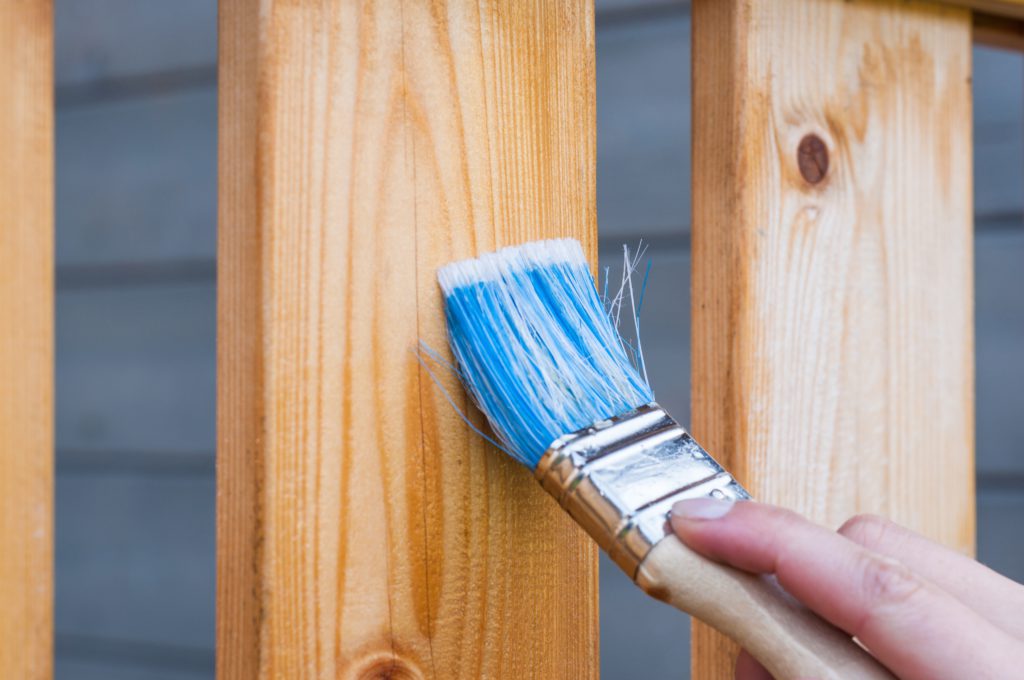Taking care of and maintaining your deck is essential.
If you aren’t going to put in the effort or take it seriously, you’ll surely regret it. Before taking on a property that has a deck (or building one) you should take the time to educate yourself on the basics of deck management and ensure you have a realistic understanding of what you’re signing up for. Without regular cleaning and treatment, the timber of your deck will become weathered. This not only looks less appealing but also encourages the growth of mold and general deterioration that can cause the structure to give way. The last thing you want is an injury that could have been avoided with a little bit of timber oil.
So, you’ve just moved into your new home, and it has a lovely big deck, or you’ve just finished installing a brand-new deck to your existing home and you’re wondering how best to look after it. You know that well maintained timber decking can last anywhere from 15-20 years when properly cared for and you’re ready to make that commitment – you’ve come to the right place. As long as you do a deep clean every 6-12 months and a quality treatment once every 1-2 years this is a very achievable goal.
Cleaning Your Deck Like a Pro
The regularity with which your decking space will require a spruce up definitely varies depending on how often you use it and the exposure to the weather. If your decking is fairly sheltered and barely used, you’ll likely be able to get away with a good clean once every few months. If you make good use of it or live in a particularly wild weathered area, then you’ll likely find it needs more frequent cleans. If you are going to leave big gaps between cleans then you should at least ensure to sweep any debris off as and when required. Allowing a build-up of leaves or dirt is a great way to encourage rot and damage to the timber – or encourage bugs to make it their home.
When giving your deck a proper clean there are 3 simple steps to follow to ensure the perfect finish every time.
- Give it a thorough sweep before you start. This is also the ideal time to clear away any furniture or bits and bobs that will get in your way. It’s no use simply sweeping around things if you want to do a proper job. Especially if this clean is being done before a good coat of quality clear decking oil.
- Apply a coat of quality deck cleaner as per the instructions provided. There are plenty of options to choose from, some of which are multipurpose and will tackle your mold concerns at the same time – ideal if you live in a humid/damp climate. It is worth noting that many of these products can be harmful to plants and grass. If your lovely garden is likely to come in contact with any product, be sure to lay down some tarp or other protection before you start.
- Finally, give your deck a deep cleansing rinse with a water pressure cleaner. It’s best to test your pressure on a hidden area of wood before you start to make sure it’s not too strong and won’t cause any damage. Be sure to opt for the widest available nozzle to achieve maximum distribution. Use sweeping motions as you go and do your best to move with the grain of the wood. If you don’t have access to a water pressure cleaner, you can use a general garden hose, but you’ll need to use a scrubber as you go. You must make sure you don’t leave any of your cleaning products behind, especially if you plan to treat your deck after you’re done.

Giving Your Deck the Treat it Deserves
Just as you would use a quality oil for wood furniture or coat your floorboards in a decent timber floor polish, it’s important to treat your deck. It’s generally accepted that in order to prolong the life of wood we need to apply a layer of protection. First thing you’ll need to do is decide what type of product you want to use – oil or stain. There are many arguments for both products as well as a variety of products that provide an overlap. When it comes to choosing whether to go with staining or oiling deck wood, the best thing to do is consider what will best suit your circumstances and the aesthetic you’d prefer.
Decking stains are primarily designed to provide a layer of protection across the surface of the wood. This layer of product will provide a light protection from weather exposure as well as a sleek and appealing finish to the wood of your deck. There are many different types of stain including products designed for specific types of wood. For example, if your deck is made from a merbau wood you would opt for the merbau decking stain for the best results. Stain products are also generally pigmented to enhance the colour of your timber or change it altogether. You may find you have to reapply this product on a more regular basis to keep the colours even and crisp.
Conversely, decking oil generally comes in a clear colour and is not used to alter the colour of the wood. Unlike the stain that only provides a top layer of protection, oil will penetrate deep into the wood protecting it from the inside out. This penetration of the product should prevent the wood from splitting, cracking or warping and will act as a barrier to moisture. This option is a lower maintenance than decking stain, you will find that it lasts longer and is easier to reapply when required. It is also thought to be less slippery than a decking stain which is ideal if you live in our wetter parts. The only downside with oiling your deck is the time you have to wait before you can change products. Unlike the decking stain, this cannot be lifted or stripped with ease. You will have to wait out the lifespan of the product, which can be a number of years.
Whichever product you decide to go with, it’s worth spending a bit of cash. Using a top-quality oil or polish will make application substantially easier and require less upkeep. Just be sure to follow the instructions very carefully as they can differ from brand to brand.
The difference you can make to your place can be impressive.
